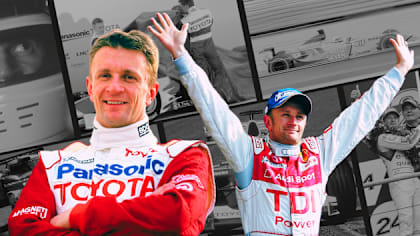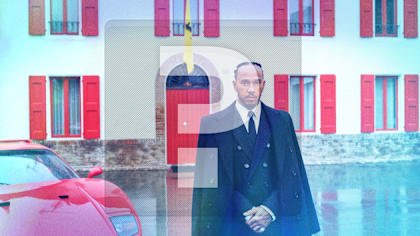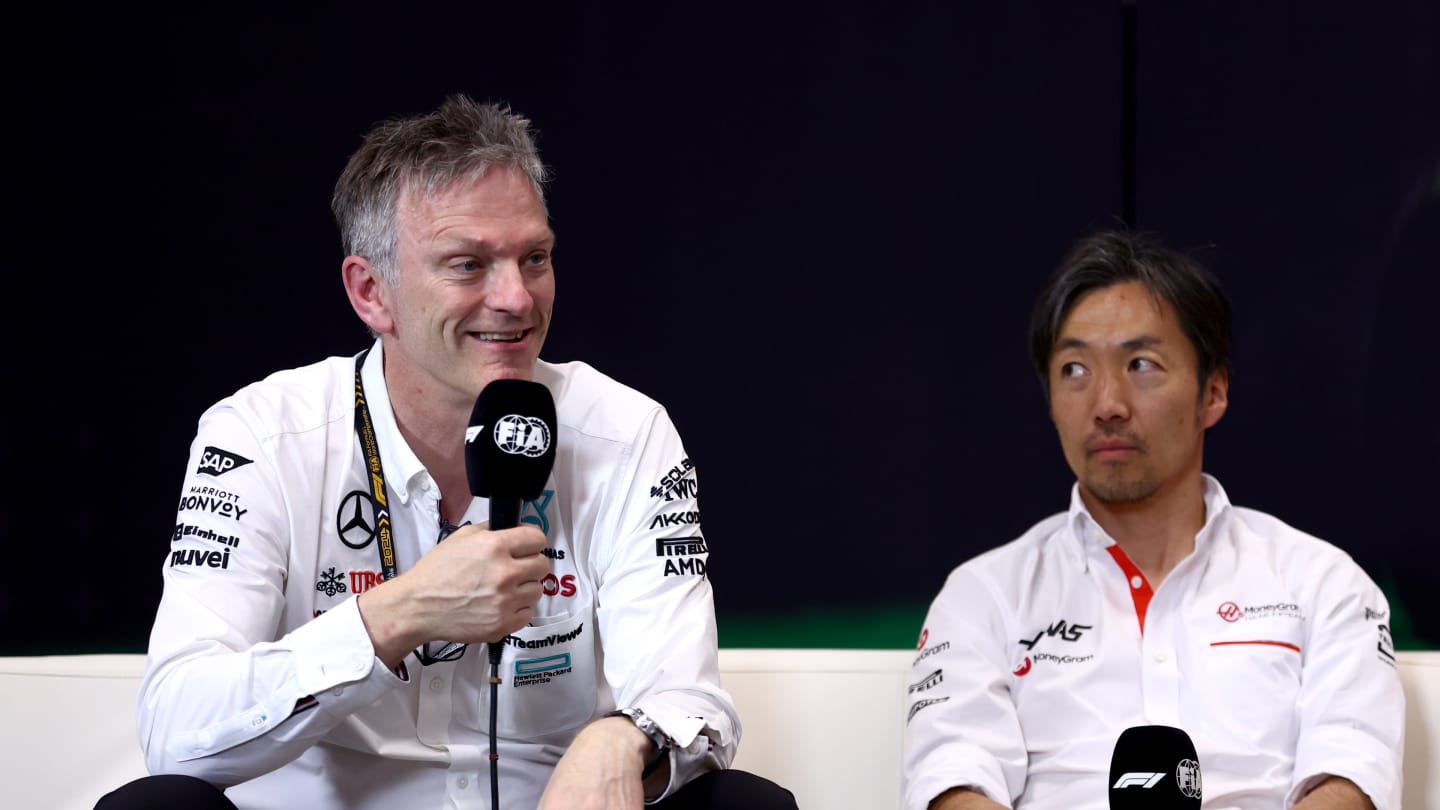
News
FIA Team Principals press conference – Emilia-Romagna
Share

TEAM REPRESENTATIVES: James ALLISON (Mercedes), Ayao KOMATSU (Haas), Enrico GUALTIERI (Ferrari), Pierre WACHE (Red Bull Racing)
Q: James welcome. Lovely to see you. Now, it's been a fairly up and down season for Mercedes so far. Are you close to achieving some kind of consistency with the W15 now?
James ALLISON: Well, I'm not sure that I've noticed too much of the up, but I think after a pretty uninspiring start, we are starting to get to grips with it a little bit. Today was a better day thus far. Let's see if we can sustain that through the important parts of the weekend.
Q: You're running some new parts here. Are you seeing some improvements that weren't there at the last race in Miami?
JA: I'd say cautiously yes, but it's a gradual thing.
Q: And James, looking at bigger picture stuff. How difficult is this period for you compared to other moments of pressure during your career?
JA: I don't think it's any more difficult for me than it is for all of us in the team. It's always tough when a car isn't where you want it to be. And that is not an enjoyable situation. On the other hand, once you do start to get your head around it and start to move it forward, that then becomes extremely pleasurable. So hopefully we've got the worst of the grim feeling behind us and are now on the upward slope of that.
Q: There are a lot of staff movements at the moment. You've had some big players come, you've had some big players go. Would you call this the normal ebb and flow of a Formula 1 team? Or are you gearing up to a new era and needing some new skill sets?
JA: No, I think it's more in the normal ebb and flow of an F1 team. The teams are big these days and in any given year you are shipping out a whole bunch of people and shipping in a matching number. That will be true in nearly every team.
Q: All right, look, final one from me. A lot of speculation about George Russell's teammate next year. Would you go for youth over experience?
JA: Well, happily, it's not me that makes that choice. So I'll just take the fifth on that one and leave it to the bigger dogs in the team to answer that.
Q: Alright, James, thank you. I'm sure there'll be more questions for you in a minute. While we're talking youth, Ayao, could I come to you now? Ollie Bearman has just driven FP1 for you guys. What was his programme? How impressed were you?
Ayao KOMATSU: It was a kind of a standard FP1 programme. So you have two sets of tyres; two runs on low-ish fuel. The first run, getting to know the circuit, getting to know the car and then the second run, the softer tyres for doing a bit of a quali-type simulation. Then last run is high fuel, looking at tyre management and consistency. Again, he's done another very, very good job. You know, he's so calm. He understands what he needs to deliver each session, each run, each lap. And he's able to absorb the information so quickly, you know, either from himself from the previous lap or the engineer's feedback. So again, I can't really fault him today. Great job.
Q: And Ayao, what has he got to do to get a race seat with Haas in 2025?
AK: I think continue to deliver like this. You know, like I said, we haven't looked in the detail yet, but, you know, but at first glance we can't fault him, what he's done today. And that was the case last year when we ran him in two sessions as well. So, yeah, if he continues to perform like this, for sure, it's difficult to ignore.
Q: Let's keep talking drivers for a second. Nico Hülkenberg said last time out in Miami that you tried quite hard to keep him for next year. Just how much of a loss will his departure be for the team?
AK: Of course, we’ll feel it. And it really depends who you're going to get for next year as well. But since Nico came with us last year, he's been providing us with amazing reference in qualifying and also his feeling in the car, feedback, especially for teams like us, you know, not as big as these guys, where some of the methodology or procedure is not as refined or detailed. You know, the driver plays a bigger role, if you like, in telling us how we should develop the car, where the strengths or weakness of the cars. So, yeah, again, we will feel it, it's a big loss and that's why I try to keep him but you know we are all adults and we all understand the reasons for him leaving and we push together you know like we've been doing before until the end of the season.
Q: One final driver question from me. it's about Kevin Magnussen now and penalty points. He's on 10 out of a maximum 12. Have you asked him to rein it in a little bit from now on to avoid getting a race ban.
AK: Yeah, I mean he doesn't want to get a race ban either. So of course we spoke about it, you know, away from the race circuit. And then yeah, this weekend of course we try to keep it as clean as possible. He has to be cleaner than, let's say, his baseline clean, if you like. But yeah, of course he's aware; we are aware. So it's not our intention to get him a race ban. So we'll see, but he knows what he needs to do.
Q: Thank you. I'm sure there'll be more questions for you in a minute. Enrico, if we could come to you now. You are, of course, Technical Director of the Power Unit, but if I could just push you into a slightly wider technical remit just to start with and talk about the upgrades you're running here at Imola this weekend. We've just had FP1. Are they doing what you expected?
Enrico GUALTIERI: Yeah, as you said, I'm an engine guy, so I couldn't really comment too much on the technical upgrades. But I think that anyway, it's still early days. We decided as a team to bring the upgrades here for being a common session. So we are just at the beginning of the Friday session. We did what we intended to do in terms of plan. So now it will be a huge analysis of the data for FP2 and then immediately after FP2. And then we will see and hopefully we can build on these upgrades later on for the session and for the season.
Q: Talking of intentions, Charles is running power unit number three this weekend. Why is that? Was that intended for this race all along?
EG: Yeah, it was not intended in terms of a defined plan. But after Miami race, our usual post-race checks didn't fit completely on our standard values. So nothing to be worried about at this stage. But simply we decided to minimise any kind of potential criticality over this day, that is quite an important one. So we simply decided… as you know, being frozen, the engine, we cannot put it on the dyno, so we need track experience to confirm the possibility and the capability of the engine to go on. We will use the engine again over the season and being the third unit, fundamentally equal to the second one, is just managing the pool. So we will use it again over the next Fridays and then we'll go on with the standard plan.
Q: And can we push it further ahead now and talk about 2026? Just how is progress in the power unit division with regard to those new technical regulations?
EG: Yeah, it starts to get more intense over this month. For sure, 2024 will be the year in which we will have to put everything together. We are going on in the development of each different and every component. So it's getting intense, it's getting enjoyable and it's getting more and more challenging because there is a huge challenge in front of us and in front, I think, of every power unit manufacturer. So this year will be the one in which everything has to be put together in order to come into the 2025 to go over the validation period.
Q: Can you tell us what you're running on the dyno?
EG: It's difficult to say because I think that everyone is doing maybe different programmes. So we are using at the dyno some components, some units. But as I said before, everything still has to be put together and we will do over the next months.
Q: Enrico, thank you for that. I'm sure there'll be more questions for you in a moment. Pierre, thank you for waiting. Now, that was a slightly scrappy first practice session for Max with those two offs. What was he saying about the car?
Pierre WACHE: Yeah, I think he's clearly having some issues in Turns 11, 12 and 14. Something we are looking at. I think the guys are there at the moment, while we speak, to look at the data, to see what we can do on the set-up to help him. But I will not say it's a normal Friday for him, but it's a normal Friday as an engineer, to try to improve the car for next session.
Q: Now, the field has converged in recent races. Does Red Bull feel pressure to find performance from RB20 or will the natural evolution of the car be enough to keep you ahead?
PW: We feel pressure to put performance on the car. I think all the people here feel the pressure to put performance on the car. It would be a dream to think that we can sleep on it and think we can wait and win the championship like that. In this business, you have to go ahead, otherwise you go backward. For sure, we are looking to put performance on the car. It doesn't matter if last race we win or not. It's our business and our mentality.
Q: The team was saying back in Bahrain at the first race that the car would look very different at race seven. That's where we are now. Is that upgrade being delayed or what's the situation? When can we expect a big upgrade from Red Bull?
PW: First of all, I think it's an upgrade we have here. I think the visibility of the upgrade is maybe not as apparent from outside, but I think it's something interesting for us. And what we put on the car and how we develop the car, it will depend on our tools’ response to the performance. And we will decide not to make it apparent first, but to make performance on the car. It's how we work. The plan is not is not fully defined and is mainly dependent of what we found.
Q: Quick question about some staff movements. First of all, I don't know whether there will be movements on the driver front but would you like to see Checo retained in 2025?
PW: Well, I think I will come back to what James said. It’s not on my side to say that. Clearly, at the moment he's doing a fantastic job. He's very close. In Suzuka he was very close in quali. The choice for the future is not mine. At the moment I have not complained on that aspect.
Q: And of course, Adrian Newey is leaving the team at the start of next year. How will his departure affect your day-to-day business?
PW: I think with knowing Adrian… I think everybody knows in this business, Adrian is a big man in this business and maybe the most successful engineer in F1. I think it's a big effect for us, but the team was prepared. It's not like we expect him for 20 years more. We have to build the team around and make sure that we are prepared for this eventuality.
Q: What will you miss about working with Adrian?
PW: His experience, for sure. Clearly, he doesn't give away anything. He has a mentality of a racer. That is very, very nice to discuss with him on that aspect.
1 / 4
QUESTIONS FROM THE FLOOR
Q: (Christian Menath – Motorsportmagazin.com) Enrico, why didn't you run the Miami engine in FP1 with Charles? Is it because you didn't want to risk to lose mileage with the upgrade?
EG: Yes, thank you. As I was saying before, after the Miami race, our analysis didn't fit completely with the usual outcome. So just for precaution, given that we cannot put the engine on the dyno to get any additional experience to confirm or not. We will reuse it in the next Fridays. And yes, definitely it was just to minimise any kind of potential risk or simply downtime in track timing for this important event, for the upgrades and for building on data analysis for that.
Q: (Samarth Kanal – The Race) For Ayao, it didn't seem like Haas or Niko Hülkenberg were particularly complimentary about Kevin Magnussen's race craft in Miami. So has Kevin Magnussen helped or hindered his case for remaining at the team in the future?
AK: I don't think it's defined by one race. And then, of course, he was trying his best to help Nico in his mind. And then whether we completely agree with that methodology or not is another matter. Then again, like I said, I spoke to Kevin in private away from the track. No pressure. A really good conversation. We understand each other completely. And then honestly, this year Kevin is so engaged, you know, from the word go he understood what he needed to do to help the team and what he did in Jeddah as well was amazing. So OK, Miami wasn't the cleanest race from him but it doesn't change the fact that he's been an amazing team player and contributing to the team.
Q: (Jon Noble – Motorsport.com) James, one of the challenges of these ground effect cars is the balance with the performance in high speed and low speed, that you get a car that performs well in one, it doesn't in the other, then you solve the weakness and it limits the strength. How far down are you in understanding that kind of aspect on your car and are the upgrades that are coming over the next few races, how much will they address that issue and improve it, do you think?
JA: I think we're gradually getting there. This track is probably one of the easier ones in that regard because the range of cornering speed is not that high. So it's a thing that all of us face and I think we've been a little slower than others to address it. But I think that you'll see over the coming races that that will be a thing that increasingly we put to bed.
Q: (Umberto Zapelloni - Il Foglio) James, can we have some news from the engineer point of view of the first test of Kimi Antonelli on your old Formula 1 cars, if you have something to say?
JA: Well, I have had the great pleasure of listening to the engineers describe the interaction with him. Just a young, enthusiastic driver, very, very fast, metronomic in his pace. Has not been in an F1 car until recently, but made it look like he'd been in one for ages within a lap or two. He came at this generation of cars, the ground effect cars, with an open mind. Yeah, he feels all the same things that you'd expect him to feel. But he's not sort of polluted by the previous cars. So he just takes them as they are and tells us what he is feeling as weaknesses and strengths. and lets the engineers work to try to improve those things. But he looks like a very promising young driver.
Q: (Daniel Moxon - Daily Mirror) A question for James, please. You mentioned the ebb and flow of staff turnover earlier on. This week we had confirmation that Jerome D'Ambrosio and Loic Serra are heading to Ferrari. Today we learned that there's another departure as well in the chief aerodynamicist Gioacchino [Vino]. Is there any concern at all over the loss of so many key players in such a short space of time and are you able to explain why these people have decided that now is the time that their future lies elsewhere?
JA: I don't think there's any point in me offering a commentary on motivation. Clearly, a team needs to have a critical mass of experienced and good people. And we would not wish to see experienced good people leave us. But we also are gathering experienced and good people at a similar rate. So I guess it's our job to try and make sure we act in such a way as everybody would rather be with us than anywhere else.
Q: (Carlo Platella – Formula Passion) Yeah, another one. Another question for James. A few races ago, Toto said that Mercedes has a problem with the physics of this car. Do you agree with him? And maybe has the view changed in the last races?
JA: Well, I guess any car that's not on pole has a problem with its physics, because all of us are basically trying to understand the physics of racing cars better than our competitors. And if we're not at the head of the pack, then it's because we've done that less well than the others. It's probably easier for you to judge whether we're getting on top of our physics by watching whether or not we're getting close to the front. So, with a bit of luck we'll be a bit closer here at this weekend by the time the summer break comes along noticeably so and then we can discuss whether or not our physics are improving.
Q: (Ian Parkes – New York Times) Question for you, Pierre. With regard to Adrian, you mentioned that the team has been planning for his potential departure for quite some time now. Would it be fair to suggest that, yes, while he will be missed, that the structure that's being put in place right now will continue when he eventually does depart, he perhaps won't be missed as much as is being portrayed.
PW: It's difficult to answer that for sure. It's what we are planning for. It's what we are working for. But the future will tell us after all we are in the competitive environment. As the people say, they are working hard to catch us. We are working hard to stay ahead. Now the team has to, and any way before it was a team effort to deliver this car. It's not one person that delivers this car. I would say yes, we are prepared to work as a team to deliver a car after if one person leave, it's a shame, but you know, and even more this type of person like Adrian, that is big important on it. But you know, we were prepared for that for sure. And I think it's something we have to prove around the year and next year.
Q: (Edd Straw – The Race) One for James. Obviously, it was around 12 months ago. there was a fairly major car change changing some of the conceptual underpinnings of the car, most of those in terms of what wasn't visible. But what's your overview of the progress made since that shift and where you are now? And are you at a point now where you're confident you've got a car that if you just keep working with it, you can get to the level you want to? Or are there still a few fundamentals that need to change or be understood to be able to open up that fruitful development?
JA: So from this last year to this, we shifted a few things that you definitely can't shift in the middle of a season and you have to do across the winter. And I think those changes were helpful ones. I don't really think there's too much in terms of the hard points on the car, the stuff that takes a season, that can only be changed across the winter. There aren't too many things of those that are crying out for adjustment. And mostly, it's just a question of hard work to get ourselves in a more respectable place.
Q: (Edd Straw – The Race) One for you, Pierre. There's obviously a lot of talk about how Adrian Newey works with the team. Could you just explain how you and Adrian work together, how that actually operates in reality so people can understand it a bit better?
PW: It's difficult to say. Yeah, I think you... The way we work together change around the years because depending of how the implication was done in Formula 1 and the implication on different projects he has and the team adapt based on his implication in the different project, then for sure what what we try to do is to make sure that we are exchanging together about how what the direction we are going with the car. I'm not sure that I can explain how we work together on a daily basis, but he's clearly more oriented on the aero side, that clearly on this side was clearly more linked than maybe on my side, that I was more on the vehicle dynamics side, my expertise coming from there. Then for sure we exchange about how the interaction between each other was, like all the aerodynamics and vehicle dynamics people are working together. I don't know if it answers your question, but it was a big part, a big name in the team. Then, for sure, we exchanged a lot, especially in terms of direction of development and in terms of how we run the weekend.
Q: (Antonio Spina – F1 in Generale) This is a question for Enrico. After the FP1, can we say the upgrades on the car are actually working quite well, or is it too early to say?
EG: Yeah, I think that it's too early. Honestly, it's the usual standard weekend. So, you know, everyone could be on different plan. We are focused on our plan. So now it's time to analyse and to see all the results that we can get right now and for the next session.
Q: (Dan Lloyd - Race Car Engineering) Question for James. To what extent are AI and algorithms being used in the background by Formula 1 teams, perhaps in terms of speeding up background processes like purchasing and production to get upgrades out quicker? Is that something that's perhaps a bit of a hidden battlefield in the sport at the moment?
JA: I don't know how hidden it is, but in the area you just mentioned, ERP systems, our own in SAP, are starting to deliver that capability. And I think that when we as Mercedes and the grid in general have organised themselves to exploit that capability, then it will be easier to predict what you might need when and how much it will cost and it'll be more efficient. But that's I think a little bit ahead. The areas where it's already kicking around the place are in aerodynamics, a bit in race strategy and it's increasingly being used to create surrogate models, to create a filter of ideas, so that you can hopefully run your ideas through a trained machine learning cluster that will give you an idea whether it's better than your last idea or give you a higher percentage chance that that idea might be slightly better than the baseline. And therefore, if you make that work effectively, then gradually your rate of finding lap time gain will be somewhat steeper. So it's already in all the teams, and it will gather pace in the seasons to come.
Q: (Samarth Kanal – The Race) Just out of interest, the FIA technical regulations say that some materials can be used and some can't be used, like beryllium can't be used in certain manufacturing. So are you exploring new materials in that sense? And if so, which ones? And is there any room for those to be explored in the upcoming technical regulations?
JA: Yeah, the sport has a dilemma with materials. Material development is very, very expensive. And so if we all plough money into finding a material that isn't generally available, eventually it will become available to all of us and all we will have done is lifted the cost base of the sport. But there'll be no relative competitiveness along the way. So there's some good sense in restricting where we can play. There's also good sense in restricting things that have very good engineering properties, but are very poisonous, for example. You don't really want to make cars out of them, even though they'd be quick. And so it makes sense to have this list, but it does mean that you're then working in a smaller field for materials innovation. There is nevertheless still work that goes on, because there is a mechanism to bring materials into that list in case it's obvious that the world has found materials that would be beneficial in F1, which we're not having to develop ourselves because the world has done that for us, and we'll import them in and the cars get better as a consequence. Within the restricted material list itself, there is still room for optimisation and making sure you're choosing the right thing for the right task, and that's mostly the playground we all play in.
EG: Yeah, I wouldn't have said it better than James. But anyway, no, it's exactly like he said. And honestly, on the power unit, we did the same process, actually, for the 2026 regulation as well. And I fully agree with James. Finally, restricting the list of materials, it's a good thing at the end, also considering the budget cap that we are facing for 2026 for the power unit. But still, it doesn't limit anyway the capability of the engineering to find within this constraint the properties and the characteristic of the material that we can get for our design. This is exactly what we are working on.
Q: (Kacper Koncewicz – Parcferme) question for Pierre. You mentioned that the teams are so big these days. How much of an impact can one person have in a technical structure?
PW: Everybody has an impact. And for sure, the higher up you are, because you are the person giving the direction you have a higher impact. However, the main aspect is that in the team, the main thing you have to do is [create] the smooth working together you need to have between the different departments and the direction is clear. Then if you don't lose this aspect, I think you could be in the right path. The main thing is, are you sure that the direction is correct? You will judge if some people have a big impact or not, but the main aspect of the team is to make sure that this aspect is respected.
YOU MIGHT ALSO LIKE
FeatureF1 Unlocked BARRETTO: Norris promised McLaren that 2025 would be his year, so is he ready to become World Champion?
Feature From high-profile flash points to record-breaking success – Verstappen's 10 seasons in F1 ranked
Feature LIGHTS TO FLAG: Allan McNish on working with Senna, an F1 chance that came ‘too late’ and helping Audi join the grid
FeatureF1 Unlocked QUIZ: How much do you know about Ferrari's British F1 drivers?
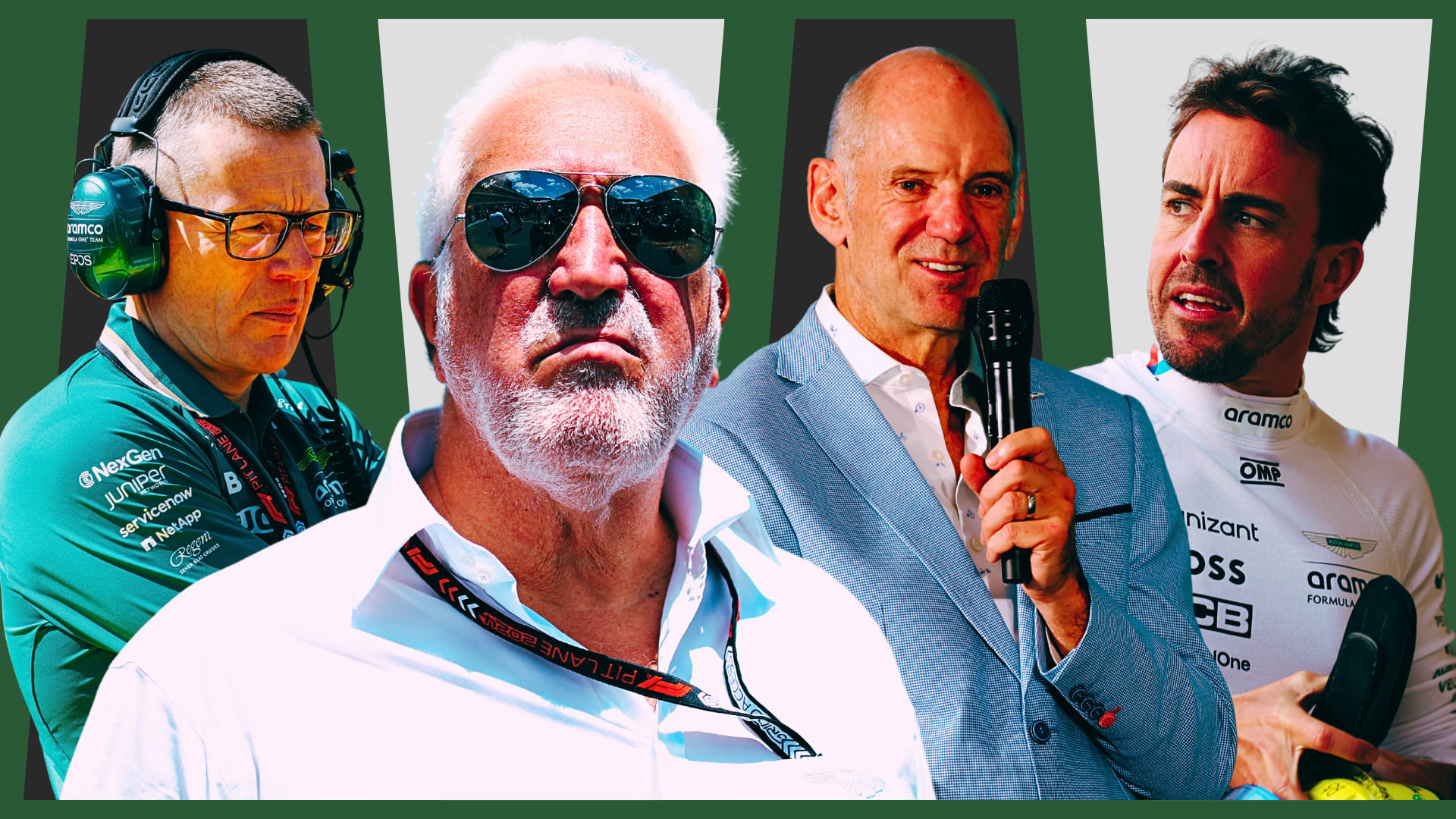
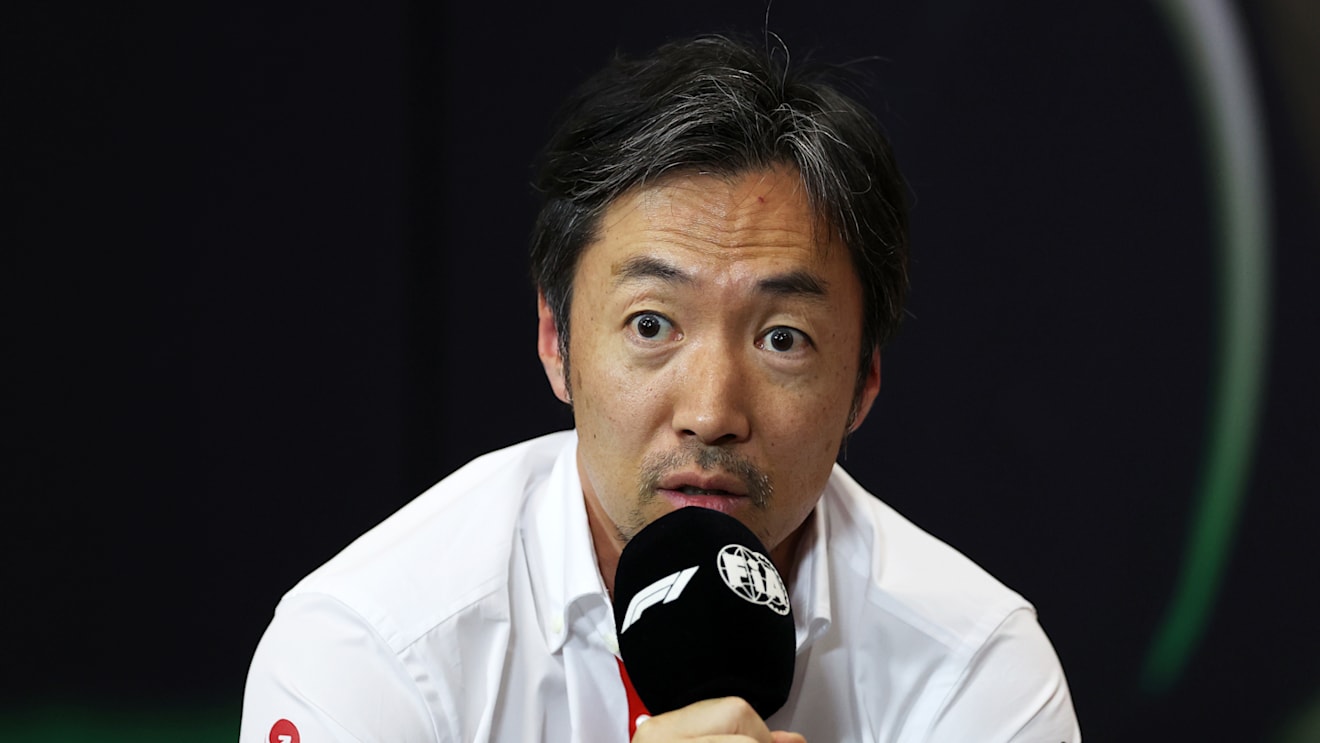
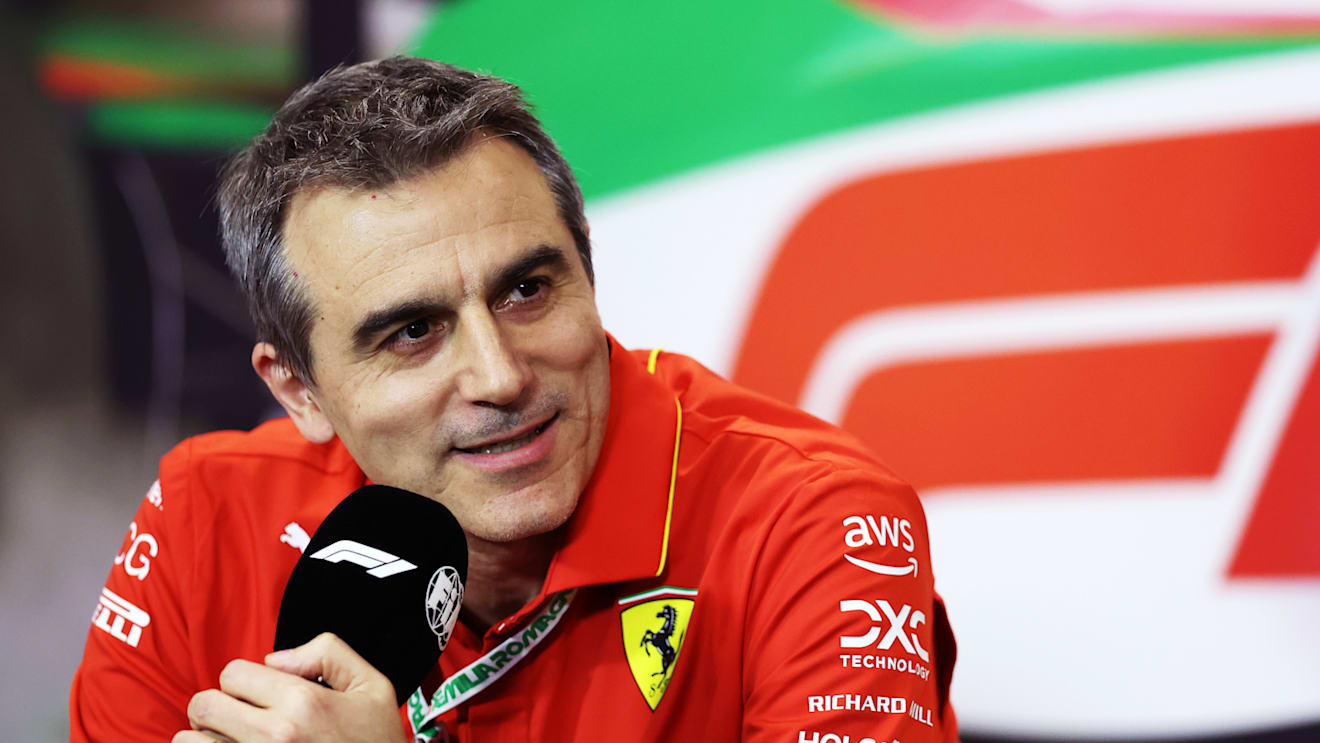
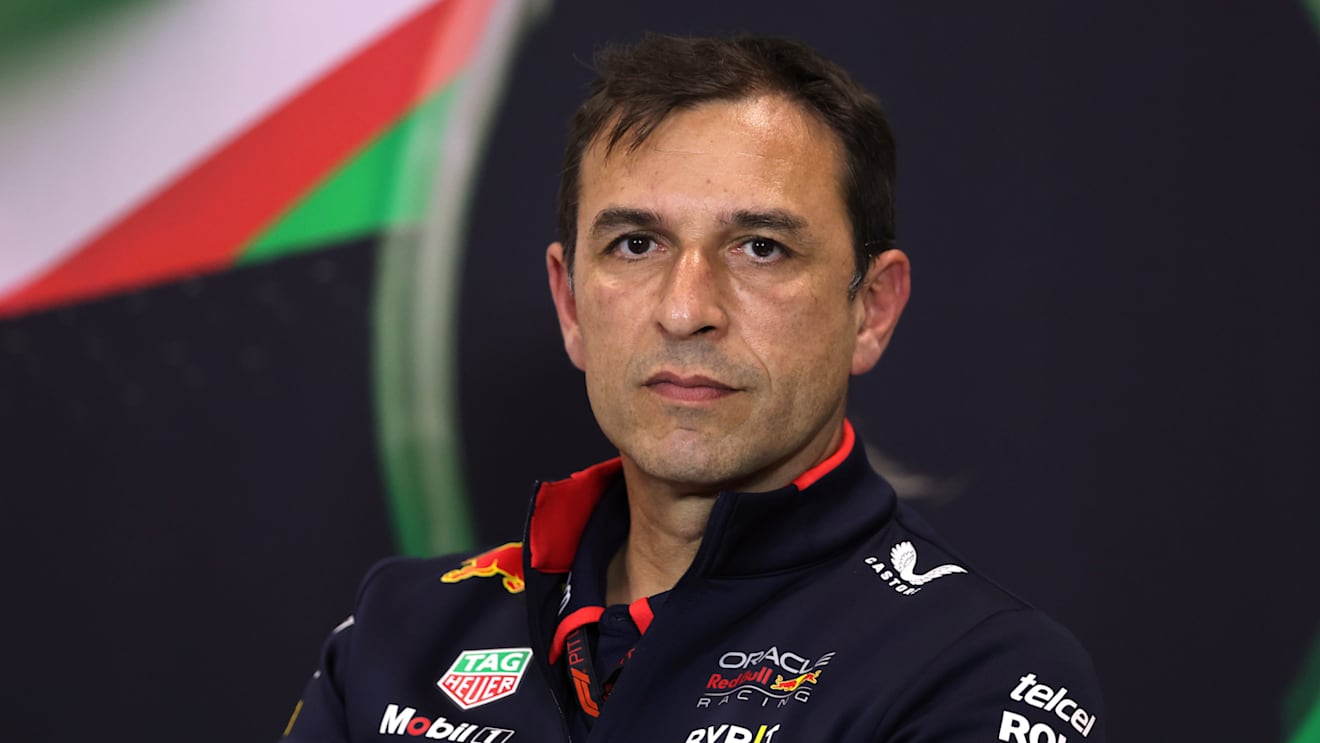
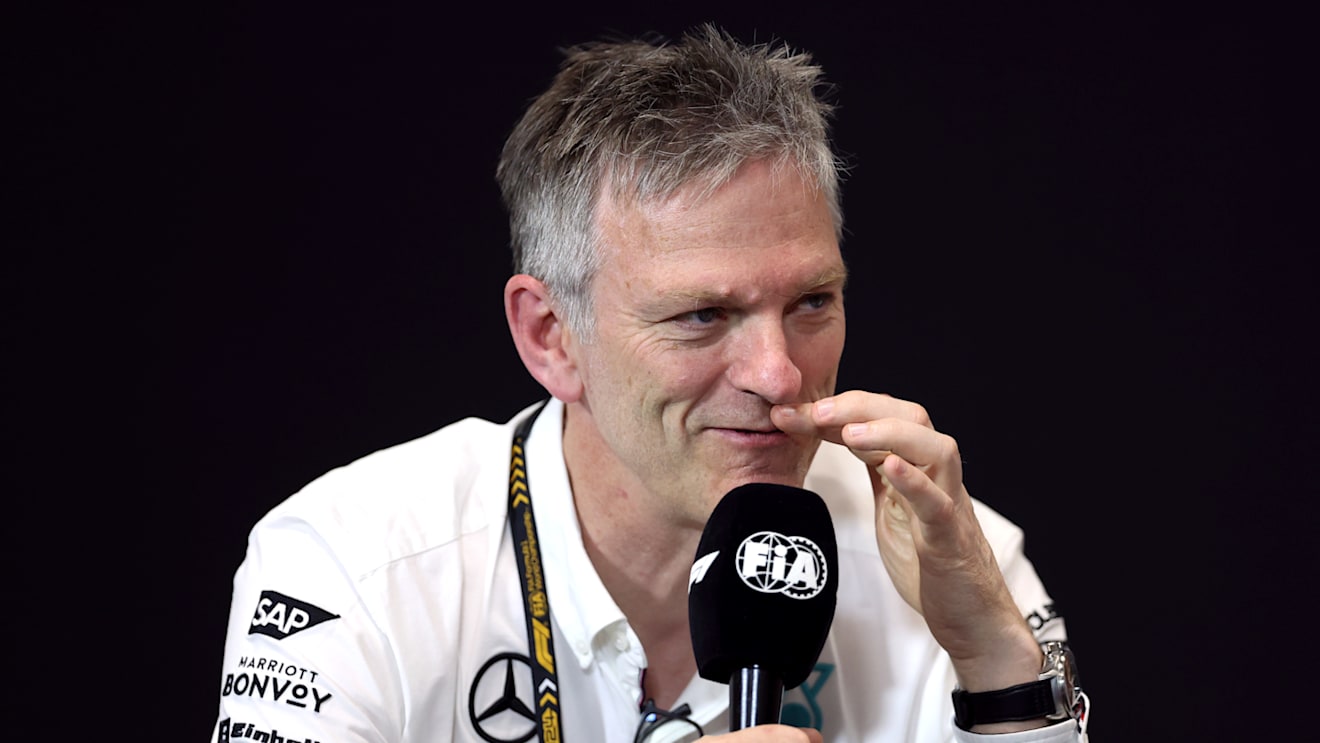

)
